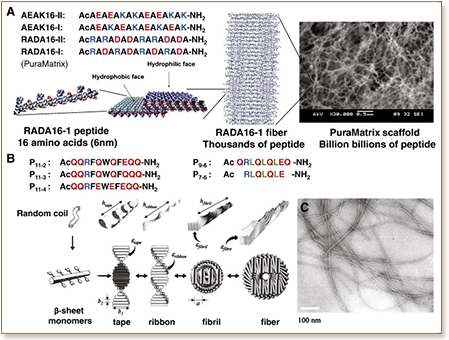

In the last few years, a variety of self-assembling short peptides that consist exclusively of simple amino acids have been designed and modified. These peptides exhibit self-assembling dynamic behaviors. At the molecular structural level, they form alpha-helical, beta-sheet and beta-hairpins structures in water. These structures further undergo spontaneous assembly to form nanofibers which aggregate into supramolecular scaffolds that entrap large volumes of water. Furthermore, nanostructures and supramolecular structures that self-organized from these short peptides also have a broad spectrum of biotechnological applications. They are useful as biological materials for 2D and 3D tissue cell cultures, regenerative and reparative medicine, tissue engineering as well as injectable drug delivery matrices that gel in situ. We have endeavored to do a comprehensive review of short peptides that form nanofibrous hydrogels. In particular, we have focused on recent advances in peptide assembly motifs and applications.
DOI: 10.1016/j.biotechadv.2011.10.004

"KAUST shall be a beacon for peace, hope and reconciliation, and shall serve the people of the Kingdom and the world."
King Abdullah bin Abdulaziz Al Saud, 1924 – 2015
Thuwal 23955-6900, Kingdom of Saudi Arabia
Al-Haytham Building (Bldg. 2)
© King Abdullah University of Science and Technology. All rights reserved